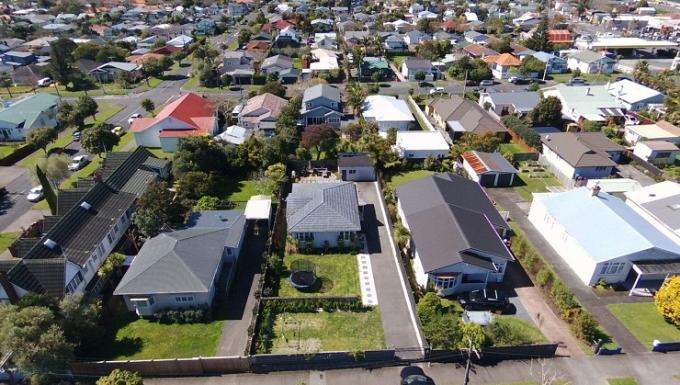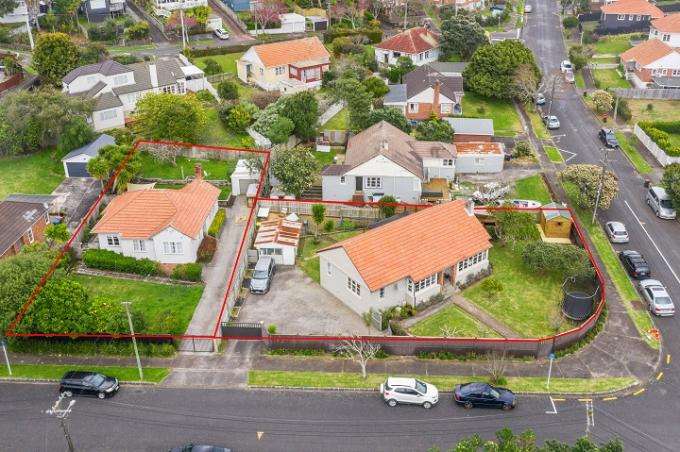As developers comb Auckland for big pieces of land zoned for density, savvy neighbours have been pairing up to sell their properties together – reaping higher prices than they would have selling individually.
But there are some things sellers should look out for.
READ MORE: Find out if your suburb is rising or falling
Harcourts agent Aman Gulia estimates he’s done in the past year 20 such deals involving neighbouring properties.
Start your property search
“Sometimes people have contacted each other, and sometimes I have been in contact with a neighbour to put [the deal] together. I’ve done developments myself, so I can see if they can add value or not to sell as a bigger site,” Gulia told OneRoof.
“I’ll look at a property and say you could get $1.6 million each, but if you sell together, I can get you more.
“I had a buyer who wanted three neighbouring properties. If they had decided to sell together I could have got them $1.65 million each, but instead they sold separately and individually got less.”
When it comes to splitting the profits, Gulia said agents can help with figuring out the split, “but generally it works out to a price per square metre of land”.
Separate sale and purchase agreements for each seller ensured equitable distribution of the sale proceeds.

Neighbours at 17, 19 and 21 Huia Road, in Point Chevalier, sold together to a developer. Photo / Supplied
Often for developers, the house doesn’t figure in the deal. Last year Gulia brokered a sale where two out of three Point Chevalier neighbours negotiated to keep their renovated houses, using the six-month settlement period to find land to relocate.
One thing for sellers to note is that developers typically ask for longer settlement periods, of at least six months, to allow them time to do due diligence and get plans advanced with Auckland Council.
“[Buyers] will pay a higher deposit or pay more for a longer settlement. If the seller is paying just 3% on their mortgage versus the developer paying 8 to 10%, it’s worth the buyer paying $60,000 to $80,000 more for longer settlement.”

Neighbouring properties 14 Konini Road and 16 Ewenson Avenue, in Greenlane, sold to a developer for $3.75 million in October. Photo/ Supplied
Gulia said that construction costs would affect what developers were prepared to pay for sites.
“They are looking for 30% profit margin and the risk is way too high to put up apartments. They cost more to build - $5000 per square metre compared to $2500 for a townhouse, and you’ve got to put in lifts and fire rating and so on. And then the end market is harder to sell for the same margin.”
Joanna Pidgeon, past president of Auckland District Law Society and a member of the Property Committee and the New Zealand Law Society’s Land Titles Committee, said that Auckland homeowners had become increasingly aware of the opportunities afforded by the city’s Unitary Plan and were reaching agreements with their neighbours to sell together.
She said it was up to the neighbours to agree their price split but land was typically the “key setter of value”.
“Usually there will be a clause in the sale and purchase agreement with the purchaser requiring the settlements to be conditional on settling the other contemporaneously. A developer would want some clauses in the agreements allowing some access to the properties in order to obtain necessary information to obtain consents before settlement usually. If the properties are tenanted, you will need to be careful that access complies with the Residential Tenancies Act.”
She advised each homeowner to engage their own lawyer and for the lawyers to “liaise closely during the sale to ensure consistency of treatment with the developing purchaser. You need to know that the neighbour will be able to get a discharge of mortgage for the sale price, and whether the brightline test might impact on tax payable if one of the properties isn’t a main home.“

Lawyer Joanna Pidgeon: "It is up to the neighbours to agree their price split." Photo / Supplied
“When you are bringing another party into a deal, their issues can become your issues. I am aware of a situation where an ex-spouse lodged a notice of claim on one of the properties being sold. Fortunately the parties were able to negotiate retentions on sale, so the sale wasn’t delayed.”
And if things don’t work out?
“The Property Disputes Committee [of the ADLS] could handle resolving lower-level dispute issues between parties, but if it was a major issue, such as an issue as to performance of obligations, this would usually see parties going to court,” Pidgeon said.
Belinda Moffat, chief executive of the Real Estate Authority, said that in any one transaction, an individual agent can represent either the seller or the buyer, but not both.
“A seller is entitled to sell their home in whatever way suits them best, and in some cases, the seller might choose to sell directly to a developer, without putting the property on the open market,” she said.
She added that while a real estate agent will provide a current market appraisal, sellers need to understand what sales data and other information the agent has used to get to that figure.
“A seller can also pay a registered valuer to provide an independent valuation. It’s always important to seek advice from your lawyer and speak to your bank or financial advisor,” she said.
Barfoot & Thompson agent Jacky Ng, who was listing agent for a pair of neighbouring houses in Howick that sold for a combined $2.916 million, vendors needed to be realistic about prices.
“Some people are expecting to add another $300,000 to their sale price - say a $1.2 million property getting $1.5 million - when realistically together they’d be worth maybe a $100,000 boost. It's still got to work out for the developer – that's adding another $600,000 in cost and not every situation the developer wants to pay that much.”
Ng said that not all developers had the means to do the large-scale projects, with plenty of buyers looking for more modest 700 to 800sqm sections. “They don’t have the capital and don’t want to invest in two sites and twice as many buildings.”
He said he was seeing momentum from vendors with cross-lease homes selling together to create one section for a single home. “In the end it’s the auction that decides. As always, if you’ve got a good section, then you can sell at a good price.”















































































